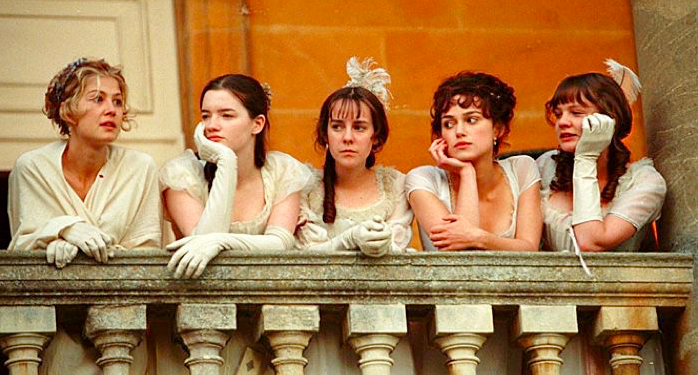2020 marks the 15th anniversary of the release of Joe Wright’s 2005 adaptation of “Pride and Prejudice,” starring Keira Knightley and Matthew Macfadyen. Though it received largely favorable reviews from critics upon its release and multiple Academy Award nominations, Wright’s adaptation of the classic 18th-century novel fell short in the eyes of Jane Austen fans. The film frequently ranks low on lists comparing Austen adaptations, unable to challenge the widely-accepted best pick: the 1995 BBC miniseries starring Jenifer Ehle and Colin Firth.
Recently, however, Wright’s version has gained something of a cult following from those who were too young in 2005 to see the film in theaters. Fifteen years after its lackluster release, young fans of “Pride and Prejudice” (2005) passionately discuss and defend the film on sites like Twitter, Tumblr and the film review website Letterboxd. Wright’s “Pride and Prejudice” (2005) calls on all of us to ask ourselves, “what makes a good adaptation?”
If you ask a bibliophile what makes a good adaptation, they will probably mention faithfulness to the source material as a primary concern. For many readers, the success of an adaptation seems to rely on how closely the film follows the book. And it is understandable why this matters: we’ve all experienced that horrible feeling of watching an adaptation and thinking, “did they even read the book?” Everyone has encountered a badly done adaptation –– or worse, an adaptation that fails to understand its source material.
If fidelity to the text is the only consideration, it is easy to see why the 1995 miniseries often ranks higher than Wright’s version on the “Pride and Prejudice” adaptation scale. Clocking in at just under six hours, the 1995 miniseries adheres to the novel almost to the letter, shooting scene after scene exactly as they were written by Austen herself –– with the notable exception of a scene involving a lake and a wet Mr. Darcy.
“Pride and Prejudice” (2005) offers something slightly different. When Wright first received the script for the film, he had not read “Pride and Prejudice” –– a fact that caused most Austen fans to consider the project doomed before it even began. Wright did not bring an encyclopedic knowledge of all things Regency or a long-held passion for Austen to the film (though he did read the novel after signing on). What he did bring was an instinct for visual storytelling and a clear vision for the film he wanted to make.
The problem with adaptations that prioritize fidelity to the book is that they are striving for an impossible goal. How much of the brilliance of Austen’s novel comes from her prose –– her pointed word choice and use of free indirect discourse? Those are things that cannot translate into a film no matter how closely it follows the book. There is always something lost in translation from the page to the screen because films are a mode of storytelling inherently different from that of a novel.
Something is always lost, yes, but something may be gained as well. Films are not meant to be books you can watch; they are their own art form. Cinema has a language, and its grammar is cinematography and sound.
Wright is in full command of this language, interpreting Austen’s prose into thoughtful camera work, evocative scenery and a moving score. The film does not just rely on dialogue to tell the story; all of Darcy’s internal struggle, his repressed desire for Elizabeth during her stay at Netherfield, is made clear with a single shot of his flexing hand.
One of the effects of Wright’s intimate directorial style is that it brings the viewer into the world of the film. Viewing the 2005 “Pride and Prejudice” is a visceral experience. You do not watch Elizabeth Bennet –– you experience the events of the film alongside her. By relinquishing the idea of total fidelity to the novel, Wright was able to create a film intimate yet grand, immediate yet lasting and contained yet universal.
Wright’s film is not Jane Austen’s “Pride and Prejudice” –– that only exists as a novel. Wright deviates, heightens and omits, but the result is a masterful piece of work rich with meaning and ripe for analysis. The 2005 “Pride and Prejudice” may not be the adaptation that adheres most closely to Austen’s novel, but it is the only one that stands as a piece of art in its own right.





NJC | Aug 21, 2021 at 8:28 am
I agree, brilliantly visceral. The cinematography is up there with the best – e.g. the shot that tracks through chez Bennet showing the elapse of time and season. Although I haven’t liked Knightley in many movies, her acting in this was breathtaking- eg at the rotunda in the rain with Macfayden. Jane was well cast, and against type for the actress. Mr Bingley was a perfect foil for Darcy…. All the acting was superb.